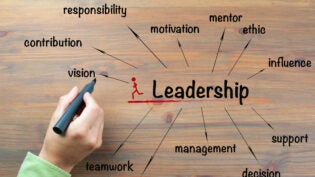
Without taking precautions to make sure your business is operating safely and effectively, you can be held liable in extreme ways for unforeseen mishaps or problems. As a business owner your responsibilities include making sure your assets, employees, trade secrets, finances, customer information, and more are all kept securely protected from harm.
This process might seem a little bit tedious, but it could pay for itself in a single avoided breach or problem.
Why Safeguarding is So Important for Your Business
Imagine your day-to-day activities as a business owner. Regardless of the industry or size of your business, your duties will likely touch a number of distinct moving parts that all represent different types of risks. From expensive equipment to sensitive data, your business requires certain components to run that are often expensive, proprietary, or both.
There are a thousand ways that important or valuable components of your business could be jeopardized, damaged, lost, or stolen if not sufficiently protected. In these types of cases, the ramifications can often be hugely costly. Losing out large amounts of capital to replace said assets is usually the least damaging case — business compromises can (and often do) cause lawsuits and severe liabilities, loss of market share, bankruptcy, irrecoverable damage, or forced closure. These types of events can be devastating if not prepared for and safeguarded against.
The following categories quickly outline some of the most common types of safeguarding many businesses implement. This can serve as a reference so that you can start building out or improving your own safeguarding plan.
Protect Against Cybersecurity Threats
No matter what type of business you have, you likely have to deal with digital data in some capacity. Whether you’re a Web3 tech startup or an HVAC maintenance company, today’s highly digital and technologically oriented world virtually forces every business to use at least some type of digital platform or process. And whenever a business uses digital systems and digitized information, it can be susceptible to cybersecurity dangers.
There are a number of strategies that cyber criminals employ to hack, steal, damage, or spy on business information and digital assets. “Social engineering attacks” use false claims or deceptive means to trick employees or other stakeholders to share information such as passwords or identification details.
Data espionage uses software installations or hacking techniques to force entry into online databases or repositories to steal sensitive data about clients or business assets. It’s extremely important for every business that uses any kind of digital data to institute a robust cybersecurity plan and make sure they update it at least annually to allow for advances in technology as well as changes in any pertinent regulations.
Secure Your Intellectual Property (IP)
If your business model involves any type of proprietary information or Intellectual Property (IP), it is vital to secure that information and protect what are often irreplaceable assets. This can take on several forms depending on the type of business you run.
Some businesses incorporate patents, trademarks, copyrights, or licenses to protect their IP. Patents are most often utilized to protect designs for physical products, processes, technology, or inventions (including chemical formulas, product schematics, and more). Trademarks protect brands, logos, slogans, and other brand-proprietary information. Copyrights protect original pieces of authorship that include books, other written works, musical works, and song lyrics.
Licensing is a structure created to ensure proper control and compensation for your products, often used for software or education offerings. Patents and trademarks are registered with the United States Patent and Trademark Office, and copyrights are registered with the United States Copyright Office. Depending on your business and business model, you might need one or more of these vehicles to properly protect your business assets.
Non-Disclosure Agreements (NDAs) and Non-Compete Clauses protect IP via different means. They are legal contracts and documents that prevent employees, partners, vendors, or other stakeholders that have access to proprietary business information from selling, stealing, repackaging, or repurposing it to benefit themselves. NDAs bar the signer from sharing proprietary business knowledge with any other parties. Non-Compete Clauses keep the signer from separating from the business to set up their own establishment that competes directly with the original company.
This is usually limited to a time duration (for instance, two years after employment end) and geographical area (for instance, if you own an ice cream shop and include a Non-Compete Clause in your employee paperwork, it might prevent a former employee from setting up a competing ice cream shop within 25 miles of your location).
Though these are the most common mechanisms in business for protecting IP, there are often other means available or different tools you might need to use depending on your industry or specific needs. Do some research to make sure your business IP is covered.
Maintain Strong Workplace and Industrial Hygiene
Companies in some industries need to worry about workplace safety and industrial hygiene more than others. However, this is an important consideration for every business that has a location where employees work. The Occupational Safety and Health Administration (OSHA) defines “industrial hygiene” as controlling and mitigating potential workplace hazards that could adversely affect your employees.
Work environments obviously vary substantially across different industries and need catered approaches to employing workplace hygiene strategies. However, here are some of the most common considerations for creating a workplace safety plan for your employees to help avoid injury, illness, lawsuits, loss of productivity, and other threats:
Stress or overuse injuries in jobs that involve manual labor. This is an important consideration in shipping, manufacturing, warehousing, delivery, construction, food industry, and other industries that require employees to perform repetitive movements (especially under load, like lifting boxes) often or in the same way throughout their workdays.
Chemical burns, poisoning, respiratory issues, or illnesses brought on by exposure to harmful chemicals or contaminants. This is especially prevalent in any type of manufacturing or physical products business that involves chemicals or other potentially harmful substances in their processes. Safely handling chemicals in the workplace and training staff to use and discard them safely is a vital step for these types of businesses.
Hearing damage or loss from sustained exposure to loud noises or equipment. This risk is prevalent in manufacturing facilities, any work environment that involves loud machinery, transportation industry jobs, vehicle maintenance work, and more. Hearing loss is often a preventable condition and unfortunately isn’t often noticed until too much damage has been done to correct the problem.
Assess your business for these and other potential risks by looking closely at the experiences of each of your employee types or teams. This step is crucial for making sure your employees can work safely in your business facilities and aren’t faced with undue risk at work.
Institute a Well-being Policy
A final area of business safety has only become more prevalent in the last 10-15 years. Employee well-being should be regarded as an important investment of energy and time for every business. If you proactively make sure your employees are taken care of and receive the support they need to navigate the stresses of both their jobs and their lives outside of work, they will not only benefit immensely but your business will also benefit from increased performance and decreased burnout and churn.
Well-being policies aren’t quite as straightforward as some of the other items in this article. They can vary widely in nature and scope, and should be tailored to meet the needs of your business and your workforce. This can often be done most effectively by talking to your employees to find out what they actually need and want.
What would help them perform at their best? What implementations could help significantly alleviate stress for them and allow them to arrive at work ready and excited to be there? Well-being policies might include more paid leave days, allowing for mental health days, a childcare stipend to support parents trying to make ends meet, or simply putting a ping pong table in the break room to give employees a fun way to connect with each other.
Regardless of how your well-being policy evolves, instituting one based on your employees’ feedback can provide not only a huge morale boost but a significant way of improving your workforce’s experience and helping them stay healthier, safer, and more engaged.
1741 Views












